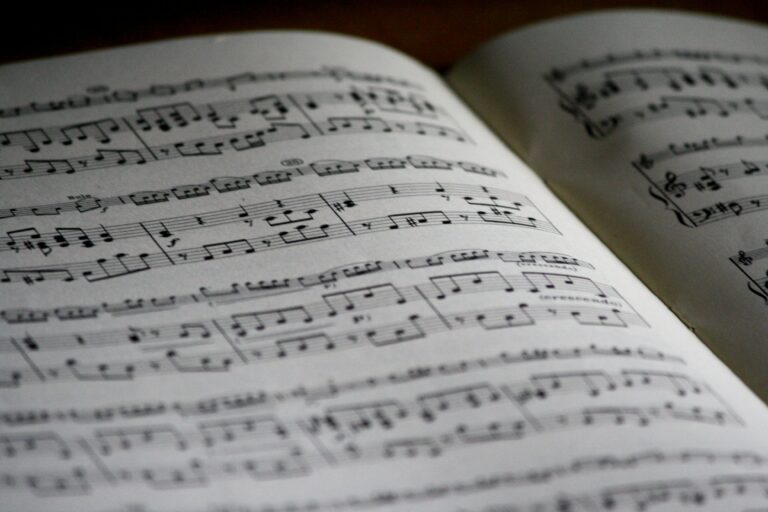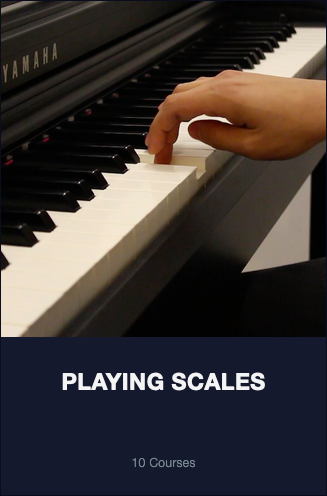In this piano scales lesson, we will focus on the Major Scale in all its glory.
We have to face it: of all the different scales that exist, the major scale is the most important one. It forms the basis of all other scales and provides us with a key signature.
The major scale is the one that most of us have been spoon-fed since kindergarten. In western society, Almost every song they taught you in those days uses this scale.
It is for this reason that most of us will naturally fall back onto this scale. A lot of musicians never even use any other scale because we can use some of its musical modes in practically any song out there.
If you prefer a video tutorial over reading, check out the video at the bottom of the post.
The Major Scale at its Most Basic

What we see in the image is our most basic major scale: The major scale of DO.
In modern-day music theory, the note names are usually replaced by the first seven letters of the alphabet.

How this naming convention came to be? I don’t have a clue… I may look into that at some point, but the only common ground that I can see is that the note ‘Fa’ starts with the letter ‘F‘. Another trick to help you remember is that on piano, the ‘Do‘ is the centre key on the keyboard and centre starts with a ‘C‘.
Major Scale Building Blocks
We could go very deep into this, but I want to start with the simplest building block possible so you don’t get overwhelmed.
A major scale consists of a sequence of whole tones and semitones. Let’s find out what those are.
Discover the new way to learn piano ► https://go.flowkey.com/pianowalk
Tones and Semitones
What are semitones?
According to Wikipedia, it is the smallest interval used in classical Western music, equal to a twelfth of an octave or half a tone.
I think for people that know a bit about music, that explanation makes sense. But for someone that is just starting out I suspect that this raizes some more questions.
Again with the courtesy of Wikipedia, an interval is a difference in pitch between two sounds.
On the piano keyboard, this is easy to show. When you press any two keys, you are playing an interval.
A semitone is the interval of two adjacent keys on the keyboard without skipping the black keys. Here are two examples, represented in a different colour.

What are (Whole) Tones?
Well, simply put, a whole tone is equal to two semitones. Here are three examples.

I added the numbers to highlight the number of keys on the keyboard one needs to travel to get to the whole tone.
Discover all about whole and semitones. Learn about intervals and chords. Read sheet music like a pro!
► https://go.flowkey.com/pianowalk
Major Scale: a Sequence of Whole Tones and Semitones
Let’s take a look again at the scale of C Major.
The major key gets its name from the note it starts at. So C major would start with C, G major would start with G, and so on.

The sequence of whole tones and semitones in this scale are represented by symbols.

Represents a whole tone

Represents a semitone
Now we look at that on the piano keyboard.

This sequence is a pattern that needs to be remembered. It is the form of the major scale.
Whole – Whole – Semi – Whole – Whole – Whole – Semi
Now You Can Build any Major Scale!
Believe it or not, but with that knowledge as a tool under your belt, you can build a major scale in any key!
We will now explore some of the other major scales to illustrate this. Let’s start with some of the easier scales.
Three Examples
G Major


Using this sequence we can find all the notes of the G major scale. As you can see we have an F# here. This is because when you follow the pattern, the expected interval from E upward is a whole tone. F would be a semitone from E so it needs to be incremented by another semitone which takes it to F#.



Just click the images ►
D Major


Again the sequence helps us to find all notes of the D Major scale. When we get to the E, we expect the next interval to be a whole tone. F only takes us halfway so it turns into an F#. The same is true for when we get to B, expecting a whole tone where C only takes us halfway so the C is sharpened to C#.
F Major


Using the pattern this time, we discover that we need a B♭. Because when we arrive at A we expect the next interval to be a semitone. The B is taking us a step too far so we have to flatten it.
Why not call that note A#? Because the A is already taken in the sequence, we expect a B after an A; therefore B♭.
To determine whether to use a flat (♭) and when to use a sharp ( # ) is easy. Just make sure you use all available letters without duplication (A, B, C, D, E, F, G)
You can learn a lot more about the major scale and key signatures at Flowkey
► https://go.flowkey.com/pianowalk
Video Tutorial
The video just gives you a compressed recap of all this information. Mind you, I am calling semitones by their alternative name: halftones. I thought I would mention that just to avoid confusion.
What’s next?
I hope you have learned something you find useful today! Piano and music, in general, is an awesome way to artistically express yourself. Here are some next steps you can take on your fabulous musical journey.
- Next, you could go check out my post about the theory of basic piano chords.
- Or if you would like some beginner warm-up exercises, you can find them here.
- Maybe you are looking for the perfect beginner piano to buy?
My number one recommendation for beginners to learn the piano quickly and hassle-free is a program called Flowkey. Go try it out for free ► https://go.flowkey.com/pianowalk



6 Comments
This makes things so clear.
At School I attempted to learn the Clarinet and had a brief attempt at learning the piano.
I struggled really badly with the piano as my teacher tried to teach by repetition rather than explanation.
Your video is such a great way of explaining the notes, I love the piano keyboard above your hands which helps make the explanation so clear.
I just wish your way of teaching, and your video, was available back in the late 1970s!
Mike
Hi Mike,
Firstly I want to thank you for your comment and your compliments. I really appreciate it!
It is true, even for myself! I am from 1976 🙂 How I wish the internet was available back then. It would have made learning new things so much easier.
I can only imagine the effect this is going to have in the long run on our kids and grandkids!
It is never too late though to learn the piano!
Cheers,
Tom
Dear Tom
Thank you very much for your fantastic website. It is amazing that you show people where to start and what steps to make towards their proper understanding of music and its value for everyone. I hope more people will know about your website and follow your guidance.
Kind regards,
Andrey
Hi Andrey,
Awesome compliment! Thanks so much!
Much obliged,
Tom
I think it was an amazing post! I admit though that I have never been really good with music… Since my first language is french and that I have some difficulties with English, I’d probably understand it better in French. However, your post was well written and explained.
If you don’t mind, do you know where I could find a course in French?
Thank you for sharing this 🙂
Audrey
Hi Audrey,
Thank you for your comment!
I do try to make things as comprehensible as possible.
Sadly I can’t say that I have any idea about French courses, but I will keep an eye out for you.
Cheers,
Tom